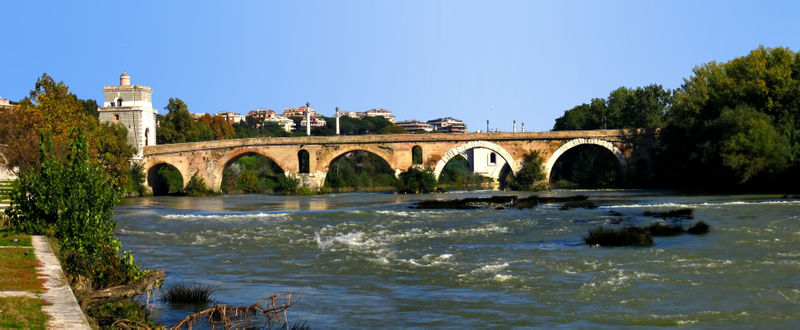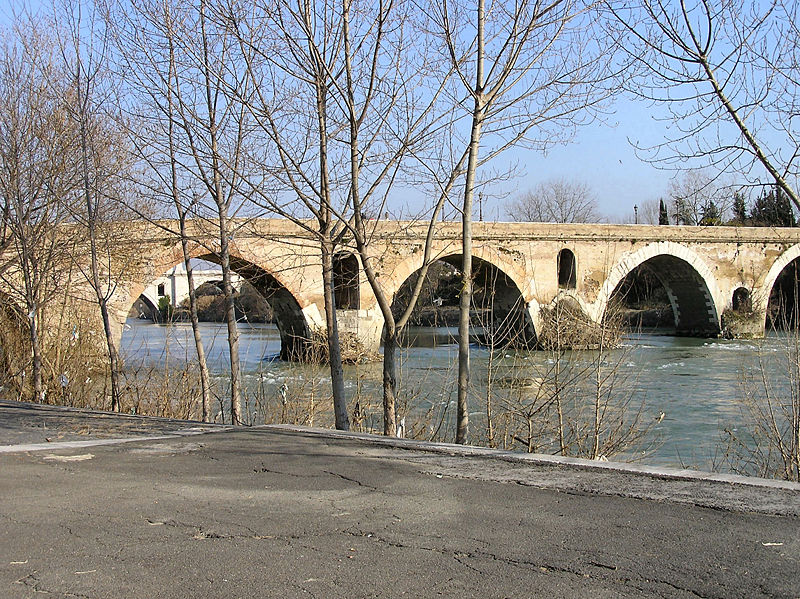Ponte Milvio
The Milvian (or Mulvian) Bridge (Italian: Ponte Molle or Ponte Milvio, Latin: Pons Milvius or Pons Mulvius) in northern Rome, Italy, is one of the most important bridges over the Tiber.

Ponte Milvio
Crosses Tiber
Locale Rome, Italy
Design Arch bridge
Material Stone, brick
Number of spans 6
Longest span 18.55 m
Total length 136 m
Width 8.75 m
Completion date 115 BC (stone bridge)
History
The bridge was built by consul Gaius Claudius Nero in 206 BC, after he had defeated the Carthaginan army in the Battle of the Metaurus. In 115 BC, consul Marcus Aemilius Scaurus built a new bridge made of stone in the same position, demolishing the old one. In 312, Constantine I defeated his stronger rival Maxentius between this bridge and Saxa Rubra, in the famous Battle of Milvian Bridge.

During the Middle Ages, the bridge was renovated by a monk named Acuzio, and in 1429 Pope Martin V asked a famous architect, Francesco da Genazzano, to repair the collapsing bridge. During the 18th and 19th centuries, the bridge was modified by two artists, Giuseppe Valadier and Domenico Pigiani. In late 2006, the bridge began attracting couples, who use a lamppost on the bridge to hang padlocks as a sign of their love. The ritual involves the couple locking the padlock to the lamppost, then throwing the key behind them into the Tiber. The ritual was invented by author Federico Moccia for his popular book and movie "I Want You". After April 13, 2007, couples had to stop this habit because that day the lamppost, owing to the weight of all padlocks, partially collapsed. As a replacement, a web site has been created allowing couples to use virtual padlocks From July 2007, for people in love, it's possible to hang padlocks again thanks to steel columns put by the mayor.